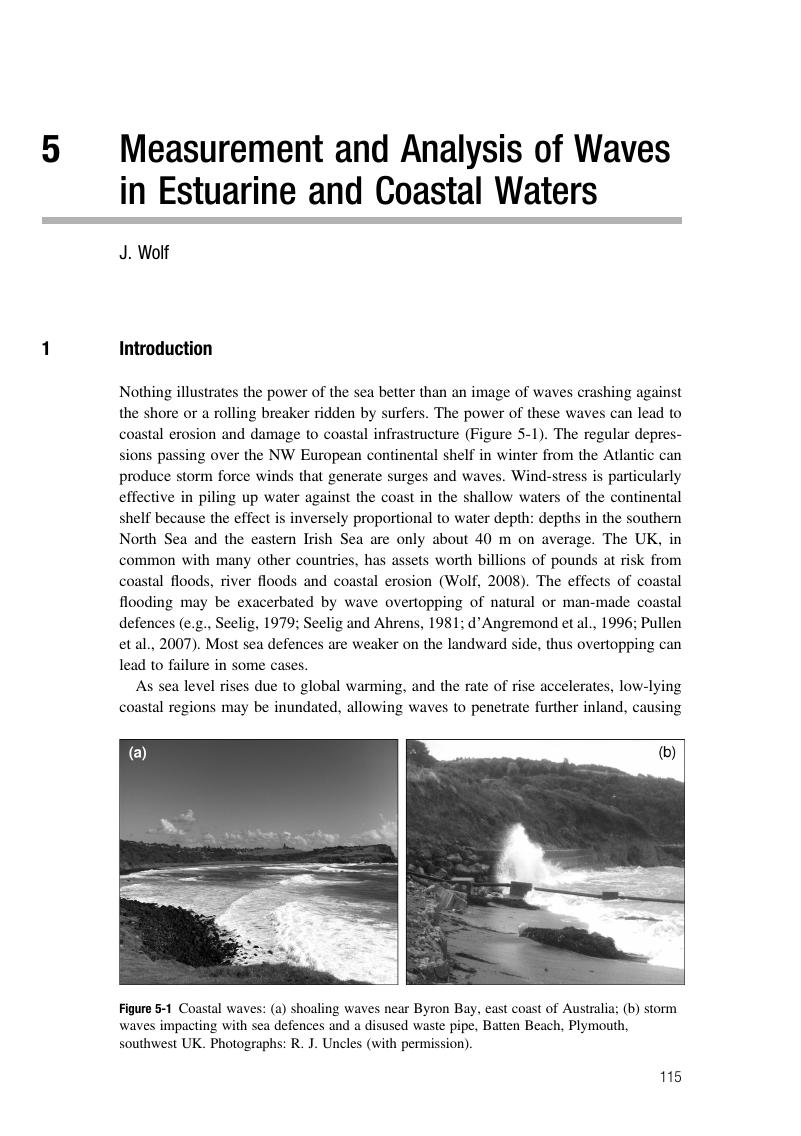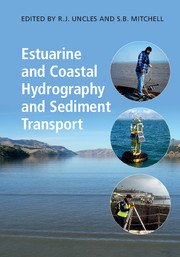Book contents
- Estuarine and Coastal Hydrography and Sediment Transport
- Frontispiece
- Estuarine and Coastal Hydrography and Sediment Transport
- Copyright page
- Contents
- Contributors
- Preface
- 1 Estuarine and Coastal Hydrography and Sediment Transport
- 2 Bathymetric and Tidal Measurements and Their Processing
- 3 Acoustic Seabed Survey Methods, Analysis and Applications
- 4 Temperature, Salinity, Density and Current Measurements and Analysis
- 5 Measurement and Analysis of Waves in Estuarine and Coastal Waters
- 6 Estuarine Deposited Sediments: Sampling and Analysis
- 7 Suspended Particulate Matter: Sampling and Analysis
- 8 Suspended Particulate Matter: The Measurement of Flocs
- 9 Sediment Transport: Instrumentation and Methodologies
- 10 The Use of Autonomous Sampling Platforms with Particular Reference to Moored Data Buoys
- 11 Satellite and Aircraft Remote Sensing
- Index
- References
5 - Measurement and Analysis of Waves in Estuarine and Coastal Waters
Published online by Cambridge University Press: 30 August 2017
- Estuarine and Coastal Hydrography and Sediment Transport
- Frontispiece
- Estuarine and Coastal Hydrography and Sediment Transport
- Copyright page
- Contents
- Contributors
- Preface
- 1 Estuarine and Coastal Hydrography and Sediment Transport
- 2 Bathymetric and Tidal Measurements and Their Processing
- 3 Acoustic Seabed Survey Methods, Analysis and Applications
- 4 Temperature, Salinity, Density and Current Measurements and Analysis
- 5 Measurement and Analysis of Waves in Estuarine and Coastal Waters
- 6 Estuarine Deposited Sediments: Sampling and Analysis
- 7 Suspended Particulate Matter: Sampling and Analysis
- 8 Suspended Particulate Matter: The Measurement of Flocs
- 9 Sediment Transport: Instrumentation and Methodologies
- 10 The Use of Autonomous Sampling Platforms with Particular Reference to Moored Data Buoys
- 11 Satellite and Aircraft Remote Sensing
- Index
- References
Summary

- Type
- Chapter
- Information
- Estuarine and Coastal Hydrography and Sediment Transport , pp. 115 - 152Publisher: Cambridge University PressPrint publication year: 2017



